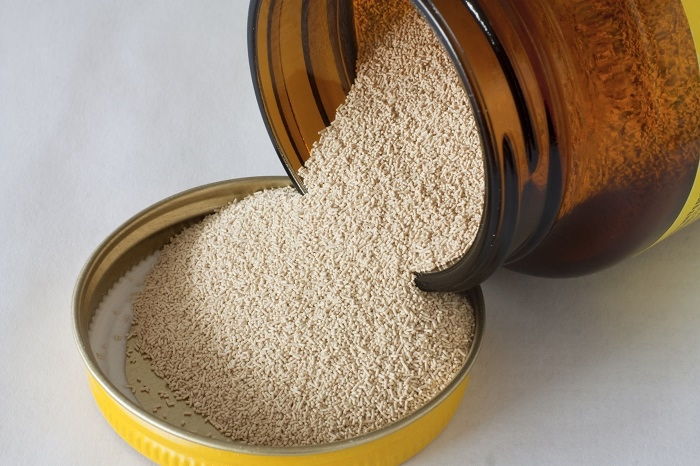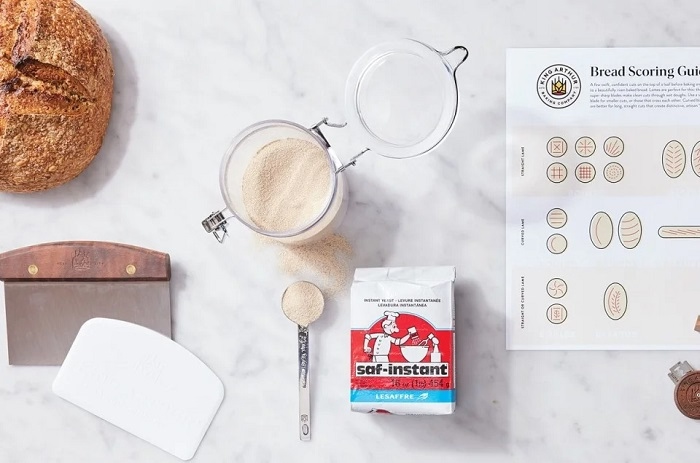If you love baking, you’ve probably come across both yeast and baking powder in recipes. While both are leavening agents that help baked goods rise, they work in very different ways and serve distinct purposes. Understanding the difference between yeast and baking powder is key to perfecting your breads, cakes, cookies, and more.
Table of Contents
What Is Yeast?

Yeast is a living, single-celled fungus that feeds on sugars in dough and converts them into carbon dioxide and alcohol through fermentation. This process creates bubbles in the dough, causing it to rise and develop a light, airy texture.
Key characteristics of yeast:
- Type: Biological leavening agent (alive)
- Rising Time: Requires proofing time (usually 1-2 hours)
- Flavor Contribution: Adds a slightly tangy, complex flavor due to fermentation
- Best For: Breads, rolls, pizza dough, bagels
What Is Baking Powder?
Baking powder is a chemical leavening agent made from a combination of baking soda (sodium bicarbonate), an acid (often cream of tartar), and a moisture-absorbing starch. It reacts quickly when it comes in contact with moisture and heat, releasing carbon dioxide to leaven baked goods.
Key characteristics of baking powder:
- Type: Chemical leavening agent (non-living)
- Rising Time: Acts immediately, no proofing needed
- Flavor Contribution: Neutral; doesn’t add extra flavor
- Best For: Cakes, muffins, pancakes, quick breads
Key Differences Between Yeast and Baking Powder
| Feature | Yeast | Baking Powder |
| Type | Biological (living organism) | Chemical compound |
| Leavening Process | Fermentation (produces CO₂ and alcohol) | Chemical reaction (produces CO₂) |
| Rising Time | Requires proofing (slow) | Immediate leavening (fast) |
| Flavor Impact | Adds tangy, complex flavor | No significant flavor contribution |
| Common Uses | Bread, pizza dough, bagels | Cakes, muffins, pancakes, quick breads |
Can You Substitute Yeast and Baking Powder?
In most cases, yeast and baking powder are not interchangeable. Here’s why:
- Texture Difference: Yeast creates chewy, airy textures (ideal for bread), while baking powder produces soft, cake-like textures.
- Flavor: Baking powder lacks the fermented flavor yeast provides.
- Rising Method: Baking powder acts quickly and doesn’t require time, while yeast needs hours to ferment and rise.
That said, if you’re in a pinch and looking for a quick substitute for yeast in non-bread recipes, baking powder might work—but the result will be more like a cake or biscuit, not true bread.
When to Use Yeast

- Recipes requiring long fermentation: Like artisan bread, pizza dough, brioche
- When you want flavor development: The fermentation process produces complex flavors
- Chewy textures desired: Bagels, pretzels, focaccia
When to Use Baking Powder
- Quick recipes: Muffins, pancakes, cupcakes, scones
- No rise time available: Baking powder starts working immediately
- Tender, soft textures preferred: Cakes, biscuits, cornbread
Yeast and baking powder are both essential leavening agents but are used in entirely different ways. Yeast requires time and care but delivers unbeatable flavor and texture in breads. Baking powder, on the other hand, offers speed and convenience, perfect for cakes and quick breads. Knowing when and how to use each will elevate your baking game and ensure the best results every time.

